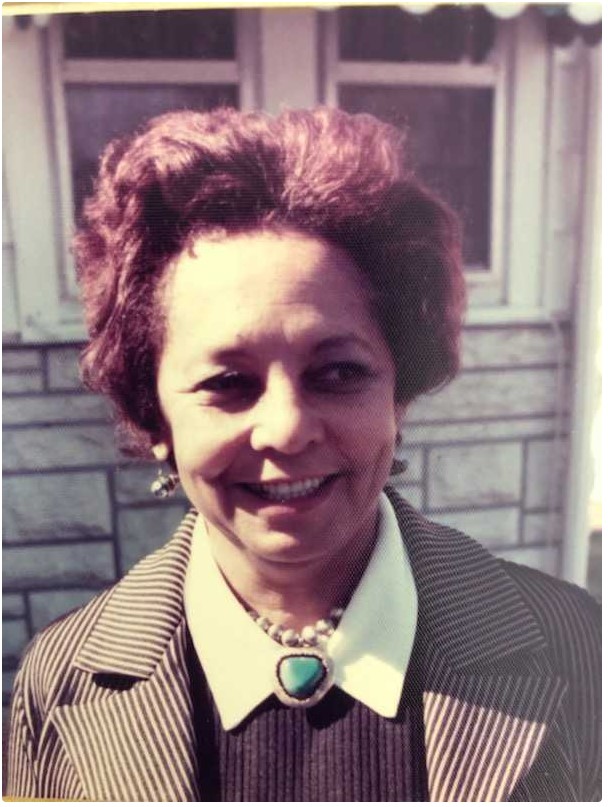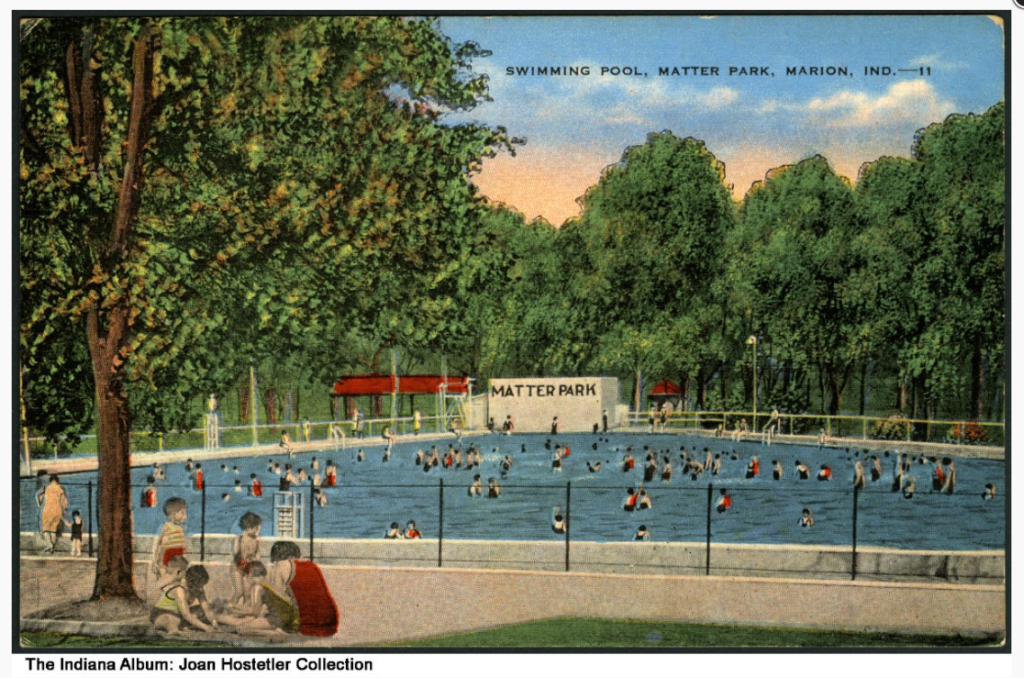
*This post was written by IUPUI Public History graduate student Molly Hollcraft.
Often, stories and memories play an important part in understanding history. They offer a human element that helps connect people to one another. W. Todd Groce wrote in an article for History News that “Memory is deeply emotional,” and when people remember something they do so because they have a connection to it. According to historian David Thelen, memory “can illuminate how individuals, ethnic groups, political parties, and cultures shape and reshape their identities.” In 2009, at the age of 98, Black activist Pearl Cannon Bassett gave an interview to a student at the University of Southern Indiana. In the interview, she recounted events related to civil rights and desegregation that she witnessed while living in Marion, Indiana. Bassett’s memories of the discrimination and Civil Rights Movement in Grant County illuminate how Black citizens in Marion shaped their identity.
Pearl Bassett and Civil Rights
Pearl Elizabeth Cannon Bassett was born April 28, 1911, in Marion, Indiana. Aside from the years she spent in Dayton and Cincinnati, Ohio and Chicago, Illinois, Pearl Bassett, also known to many as “Ms. Pearl,” spent her life in Marion. In her oral history interview, Bassett briefly talked about her early education and her family. She recalled how her teacher lowered her grade because it was “too high.” While she was not living in Marion at the time, she recalled the impact the 1930 Marion lynching had on the local Black community. As a 19-year-old, she would have been about the same age as victims Tom Shipp and Abe Smith. In August, the young men had been jailed for the murder of Claude Deeter and rape of Mary Ball. A white mob ripped Shipp and Smith from their cells, brutally beat them, and lynched them near the Marion courthouse. Fearing for her safety, Bassett’s family told her that she should not return home yet. When the National Guard was called into action in Marion not long after the lynching, some of the soldiers were standing in her family’s yard. In remembering the lynching, she said “that was terrible because we had a lot of discrimination.” Shortly after the tragedy, she became a member of the National Association for the Advancement of Colored People (NAACP).
Through organizations like the NAACP, Bassett became an active member in the Marion community and helped fight discrimination and segregation. Her name appeared frequently in the African American newspaper The Indianapolis Recorder for these efforts. Her work included how helping the Red Cross reach its quota for war relief, serving as chairman for the war service commission, and serving as a board member for the Carver Community Center. In her interview, Bassett talked about how she helped organize the NAACP Auxiliary, Women in NAACP, and the Urban Gild, all of which would play a role in desegregation efforts throughout the city.

She also described the discrimination that Black citizens in Marion faced because of segregated of swimming pools, such as Matter Park. Before its 1954 integration, African Americans had to travel to Anderson to swim. When they did get to swim in the Marion pools they would be drained and refilled afterwards. While it is unclear how directly Bassett was involved in these efforts, it is certainly possible as she was a member of the Marion Urban League, one of the two civil rights organizations that worked to desegregate the swimming pool.
We do know that she participated in anti-discrimination efforts through civil disobedience, as she stated: “When we could not go into the restaurant and eat. . . we formed a committee, and we just read the civil rights law, which has always been right. . . . And if they didn’t open up the place, when they were charged $100 a person in their restaurant. So they opened it up the day we walked in there.”

She also joined an NAACP march in 1969, recalling “We first had the walk from 26th Street to the courthouse for discrimination and equal opportunities for people and jobs. And it was a wonderful thing.” The Ku Klux Klan tried unsuccessfully to confront them at the courthouse, but were told by the city that “they would need a permit and that they [the KKK] would have to take their hoods off.” This was not the only experience that Pearl Bassett had with the Klan. While president of one of the many organizations she was involved in, she received a call from the Klan members. She said, “Many a time they told me they were coming out and burn up my house.”
While in the NAACP, The Indianapolis Recorder reported in the 1960s that Bassett was elected secretary and chaplain for the Marion branch. Bassett was also the President of Women and “wore her tiara as the state queen of the NAACP” during a visit to Kokomo in 1982. She was also the first Black secretary of the Democratic Committee in Grant County. Pearl Bassett also received numerous awards from the NAACP and The Fort Wayne Frost Illustrated reported in 2004 that she received the Region Three Rosa Parks Women of the Year award for her work in civil rights. The Mayor of Marion made a Proclamation for Pearl Bassett Day and gave her a key to the city. In June 2021, Pearl Bassett passed away at the age of 110. Her first-hand accounts help humanize tragic events and shape the identity of Black citizens in Grant County. Her documented memories are invaluable because traditional media often mischaracterized or neglected to record minority history.

Sources:
*Newspapers accessed through Hoosier State Chronicles and Newspapers.com.
W. Todd Groce, “The Value of History: When History and Memory Collide,” History News (2006): 5-6, accessed JSTOR.
David Thelen, “Memory and American History,” The Journal of American History (1989): 1117 1129, accessed JSTOR.
“Pearl Bassett,” Indiana Commission for Women: Writing her Story, 2019, accessed in.gov.
“Pearl Bassett Oral History Interview,” University of Southern Indiana, November 7, 2009, University Archives and Special Collections, David L. Rice Library, University of Southern Indiana.
Nicole Poletika, “Strange Fruit: The 1930 Marion Lynching and the Woman Who Tried to Prevent It,” Untold Indiana, May 15, 2018, accessed Untold Indiana.
